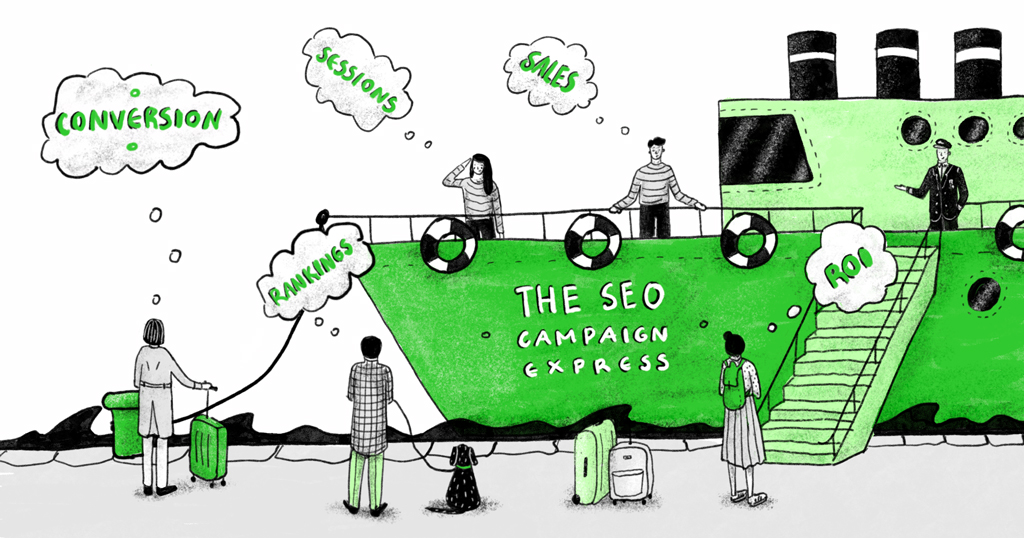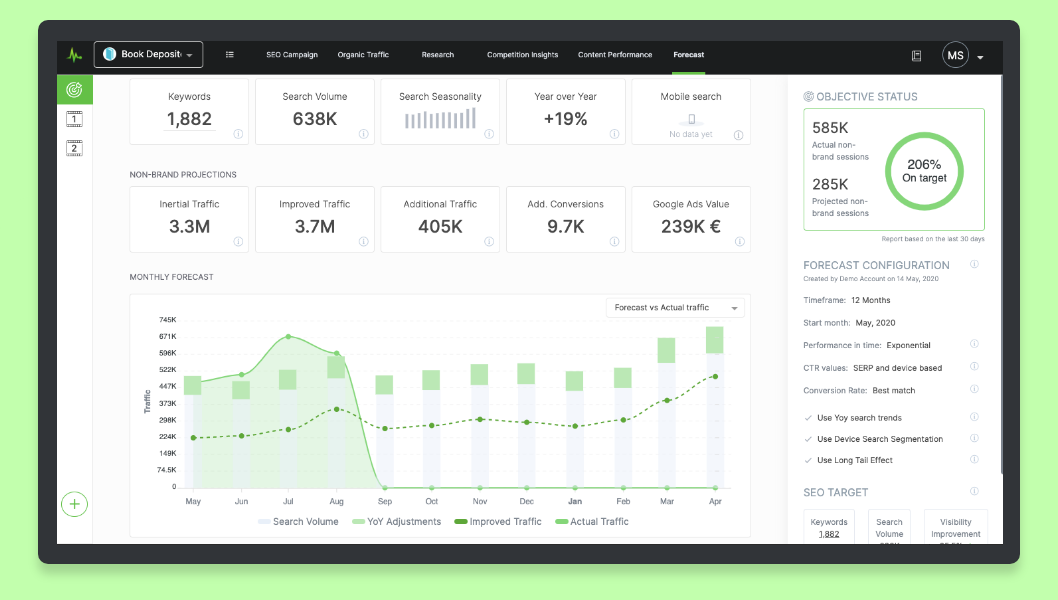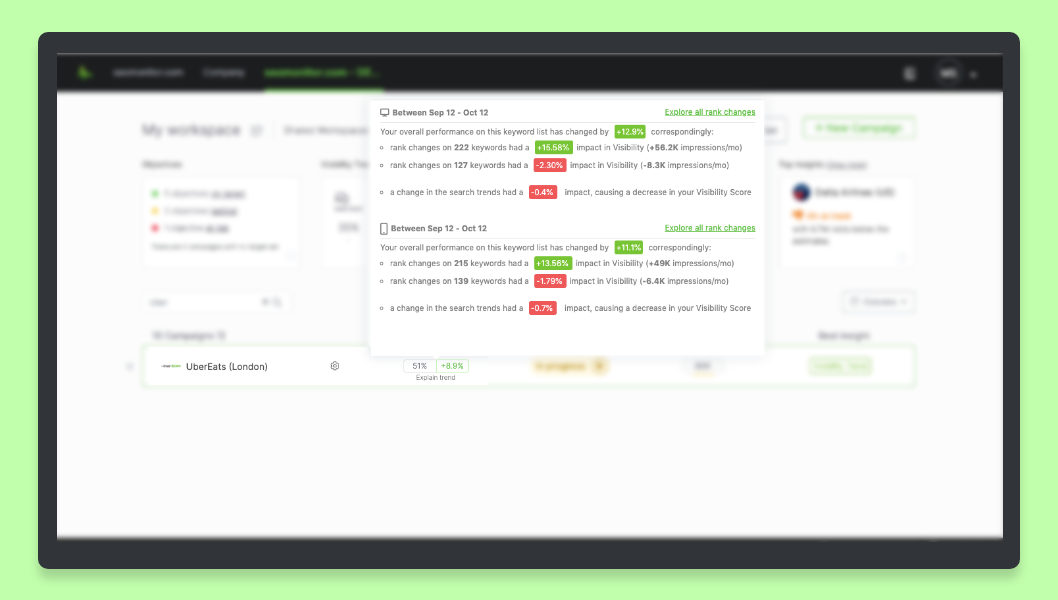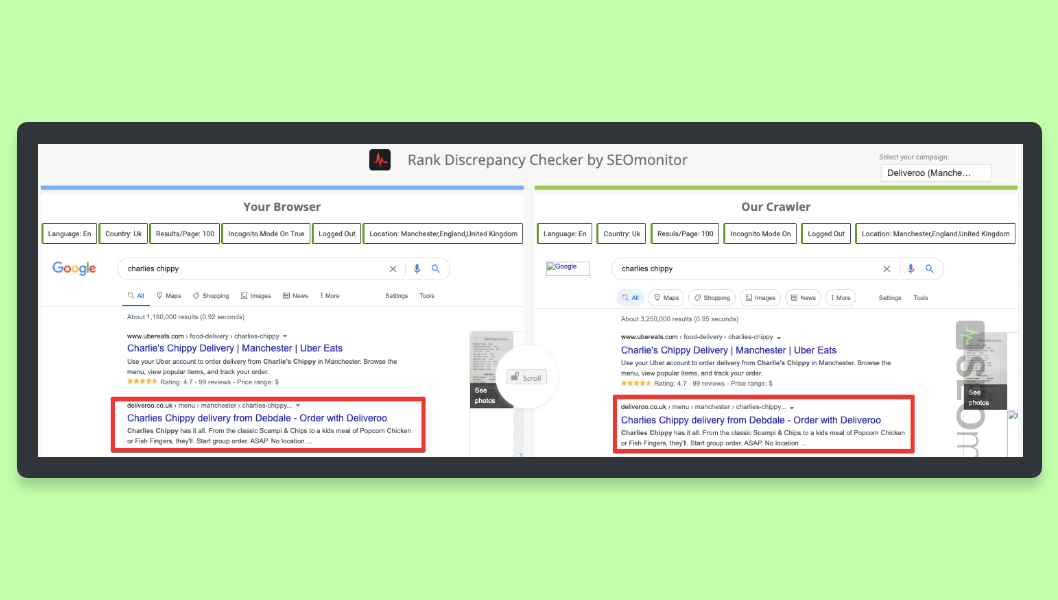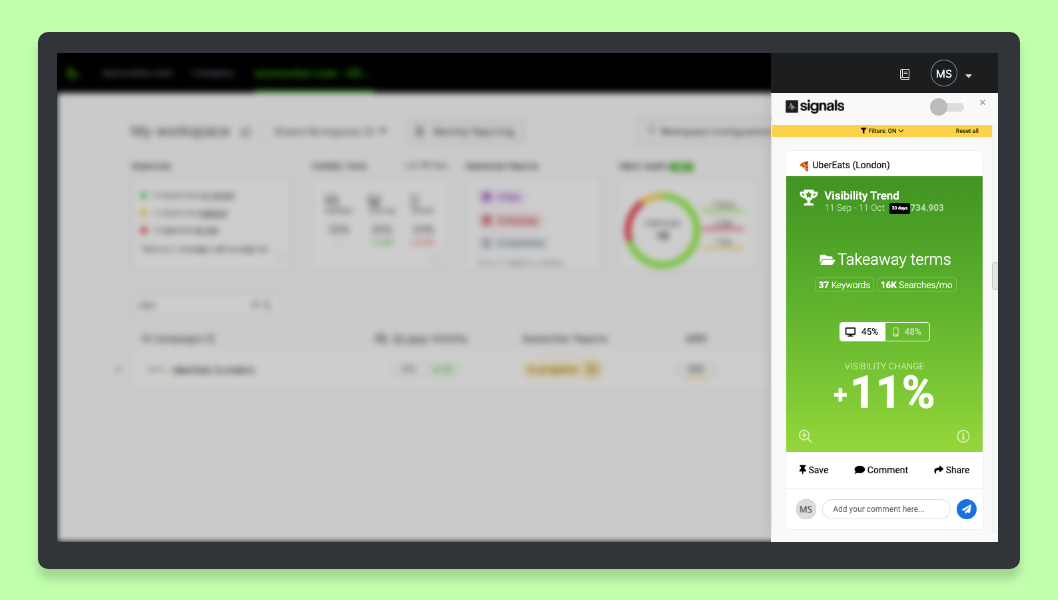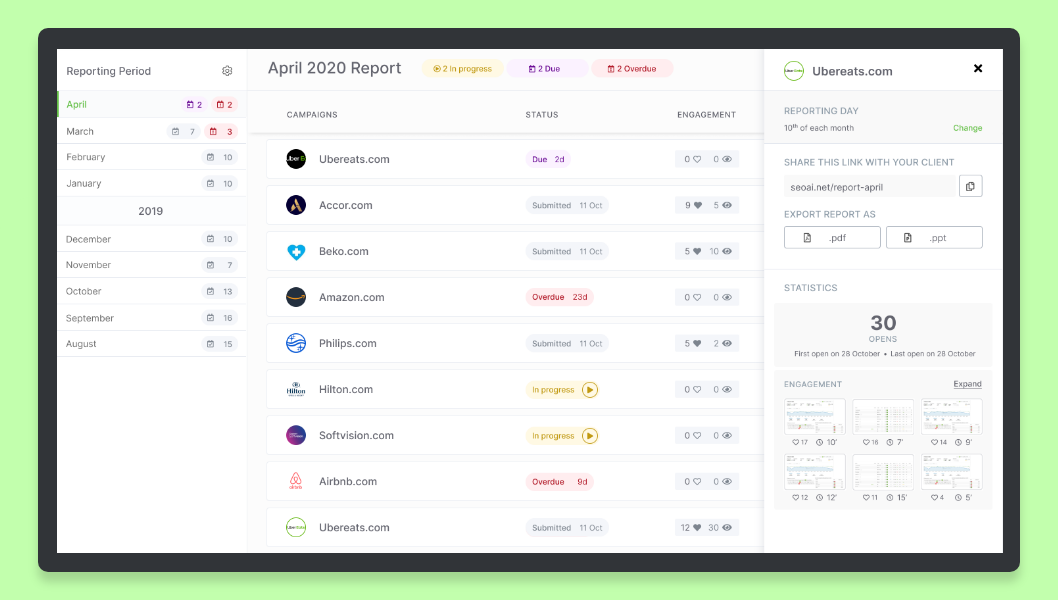The so-called honeymoon period is all about excitement and new possibilities.
Your agency is thrilled to have won a new client and the client can’t wait to see the SEO campaign and your team in action. Yet, there are still many unknowns to address.
How you move during this first phase of the relationship sets the tone for how the project evolves and even how the results look.
First impressions happen, whether we want to or not. It may be true that sometimes they can be misleading, but it’s also true that there are many concerns when building something new, and working with assumptions creates more friction and unnecessary conflicts.
So why not design the experience from the start? Having an onboarding process in place makes a difference.
For small agency owners, it builds a structured acquisition process and a natural flow into a solid honeymoon period. For bigger agencies, where unlocking growth also involves lowering the churn rate, setting the right premises from the beginning counts for retention.
No matter the scenario, there are a lot of business benefits for your SEO agency to design an onboarding experience.
There are different ways to go about it. From our informal talks and Circle workshops with SEO agencies, we’ve identified parts of onboarding happening from the sales phase – trying to understand more about the client and the business in a discovery questionnaire or even doing a preliminary audit to showcase expertise and start gaining trust.
What we’re further examining in this article, as an onboarding framework, is what happens after you’ve signed the contract, which probably means the forecast is accepted and the SEO objectives are set.
How do you keep your new client close?
Why Onboarding Is Critical for Your Agency
As its dictionary definition plainly puts it, onboarding refers to “the action or process of integrating a new employee into an organization or familiarizing a new customer or client with one’s products or services.”
Indeed, onboarding customers is a lot like onboarding new employees. For instance, Google has designed a whole process around integrating new hires, even calling them Nooglers.
If in the case of employees, most of the onboarding is informal, especially in an office environment where colleagues pick up cultural tidbits from other peers, in the relationship with a new client you have to be more specific.
Also, the process goes both ways. The new client gets familiar with your way of doing things, your team, and your agency, while you get familiar with the client’s business, industry, and team. It’s mostly about building a healthy, trustworthy business relationship from Day 0.
Even if the contract is signed and the first impression seemed good, you still don’t have a solid relationship. The client probably needs a lot of reassurance and evidence regarding her ROI.
You also need to dive deeper into the client’s expectations and understand the business strategy as a whole.
Let’s take it step by step!
Even if the contract is signed and the first impression seemed good, you still don’t have a solid relationship.
Step 1: Get to Know Each Other & Clarify Expectations
Part of building a good working relationship from the start has to do with clarifying expectations. Getting the internal and external teams together is a first step in creating a context where both the agency and the client can ask their questions and obtain alignment.
You probably have quite a lot of information from the sales process, but this is a great moment to review the client profile and add new data to it.
So think about a kick-off call with everyone involved – the client representatives, the account representative, maybe the Head of Client Service, the agency CEO, the SEO strategist, content writer, etc.
Decide on the roles based on their direct involvement with the audit, strategy, and the following SEO campaign and its specific.
Large meetings can sometimes mean that not everyone gets to have their voices heard, so the account manager should assume the role of the host and introduce each participant.
In an online-only setting, you could use break-out rooms, Zoom’s group feature, to foster even more direct contact. Also, you can use a camera-on policy to gather as much nonverbal input as possible and better facilitate the meeting.
This meeting is all about setting the project environment. Go ahead and clarify basic questions like:
- What are the expectations around communication (channels, frequency, reports, etc.)?
- When can I see the first results?
- What are the business challenges at the moment?
- Who do I ask for help and input (on both sides)?
- What other information do we need to better understand the business context?
Both teams will probably have questions regarding the onboarding/working process – apart from the ones in the discovery questionnaire – and regarding the project per se.
Regarding the latter, make sure that the SEO objectives are clearly understood. Go through the timeline of the project bit by bit and explain how actions and metrics are connected in any given scenario.
Step 2: Establish Workflows, Get to Know the Company & Explain Your Own
Do not assume that just because you’ve already secured the deal, you have everyone’s buy-in or the targets are accepted. As we’ve mentioned before, it’s important to know the client’s business landscape and overall strategy.
So review your discovery inputs, ask further strategy questions, and ask for documents that paint the whole picture (market data, buyer personas, other campaign data, etc.). Also, gather brand assets and be aware of the client’s positioning.
For your part, make sure the client has a clear understanding of the reporting methodology and KPIs involved. If you’ve presented an SEO forecast document before, revisit it and explain what success looks like in terms of data and metrics.
Try not to overfeed KPIs and jargon from the first meeting, but be empathic and always look for opportunities to explain things like “visibility,” “ranks,” and “rank changes.”
For instance, if the Visibility Score is an impression share metric weighing the monthly search volume of each targeted keyword and their current rankings, then you should explain that sometimes drops don’t necessarily mean a bad thing. As the campaign evolves, drops can happen due to more keywords added or because of seasonality.
Or you can take rank changes and explain that sometimes what a browser shows and the real rank achieved for a specific keyword are not the same due to data actualizations, the state of the browser (incognito or logged in mode), and more.
Setting a clear benchmark in terms of objectives, possible growth scenarios, and the metrics that explain that will give you a shared understanding of success, and you’ll be able to directly correlate your efforts with the client’s business results.
Step 3: Share Progress Often and Show Your Expertise
You’ve clarified a set of expectations, gathered more data, and maybe even started working on the first deliverables – be it a technical audit, the SEO strategy, or an in-depth competitive analysis.
Yet, you’re still building trust. So it’s crucial that the client sees progress in the early phase of your collaboration. While no results can magically appear in the first 30 days, your understanding of the search ecosystem will shine here.
You can do weekly check-ins, send short status emails or just do short phone calls, and most importantly you can use your know-how for consultancy: report on recent competitors’ moves, highlight opportunities and share other relevant insights.
It’s a good way to keep your client in the loop and also touch base on your first audit findings, technical issues, etc. It’s also the moment to ask for feedback and optimize the process, project, and relationship.
Step 4: Explain the First Deliverables & Gather Client Feedback
Another crucial aspect of the onboarding process is the moment you deliver the technical audit and your proposed strategy.
Again, you can involve all the direct roles:
- Bring the persons behind the audit to explain every finding.
- Bring the persons behind the strategy to describe it step by step.
- Clarify tasks for both teams (agency and client).
There’s also the case where more types of audits can be considered.
Perhaps, you’ve gathered interesting inputs from a content audit and you’re ready to share editorial proposals, content calendars, etc., so you bring your content strategist along.
Or maybe you’ve uncovered some brand opportunities and you assume a consultative role as well, offering a new angle to the business strategy.
No matter what types of deliverables you consider first, be sure to gather more feedback, adjust in accordance, and declare the campaign launched once you have the client’s buy-in.
For more transparency, you can add the client to your SEO platform of choice, so they know what happens in real-time. After all, you’ve already defined metrics and are aligned on potential results and how they’re measured.
This is also the phase when you can review the reporting process once more, and even go ahead and set up the client profile in your reporting tools.
Step 5: The First Report – Optimize for Transparency
Having a clear-cut reporting process makes your onboarding easier.
The first thing you need to do is to deliver the report on time, based on what you’ve established with your client.
A calendar, a project management tool, or an agency dashboard come in handy for keeping track of it and even giving you the proper nudges (notifications) to create the document beforehand.
Sending the report at the established date shows care and credibility. It also gives the client the opportunity to review it before discussing it.
This is just one half of the equation. The other is the first reporting meeting and making sure you design it.
Even if there are more insights or status updates to share in this first meeting, it’s important you discuss each point. Show what you’ve done and set out to do in the following month, share opportunities, and even a quick win or two, and address client concerns.
Translate your SEO work without overwhelming the client with data, show what counts (monthly actions and tasks, improved keyword research, competitors’ insights, SEO issues, and opportunities), and answer all questions.
Optimize for time, clarity, and transparency and you’ll have a happy, aligned client on your side.
Summary
An onboarding process designed from A to Z helps with good client experience and avoiding a lot of mishaps, unmet expectations, and other project pitfalls later on.
If you think about it, it’s also a way to scale customer management, as you’re clear on how you approach clients, how you set up their account, the tools you’re using for their campaign, your reporting process, etc. – a “template” that supports growing your client portfolio in the long term.
So here, in short, is what you need to take into account and do in the first ~30 days:
- Make sure that your client and their team, and assigned team from your agency know each other.
- Clarify expectations both in terms of workflows, communication rules, reporting habits, and in terms of project – SEO objectives, SEO metrics, measuring success, and business results.
- Share progress often and keep your relationship promises. Especially at the beginning of your agency-client relationship, check-in often and be a consultant: share insights, show opportunities, show a deep understanding of the client’s industry, and so on.
- Explain the first deliverables (audit, strategy, market research, etc.). Keep the feedback loop open, always explain your work, and gain buy-in before proceeding.
- Build a thorough reporting process. Create the first report on time and design a reporting meeting that is optimized for clarity and transparency.
We understand the need for an effective onboarding and optimized internal processes, so our team at SEOmonitor constantly designs solutions specifically for SEO agencies.
Our Forecasting module supports you with more data points to set realistic SEO objectives, our Reporting board helps manage the whole process with reminders, templates, client feedback collection, and our Google Slides assistant automatically pulls the best insights from SEOmonitor.
Plus, there’s Signals – the mobile companion that keeps you up to speed with relevant updates on your SEO campaigns, so you can share quick wins with your newly acquired client.
These are just a part of our solutions to help SEO agencies acquire, manage, and retain more customers.
Join us in our journey to bring more transparency to the SEO industry.
Build trust with better
data and transparent methodologies!
The opinions expressed in this article are the sponsor's own.


